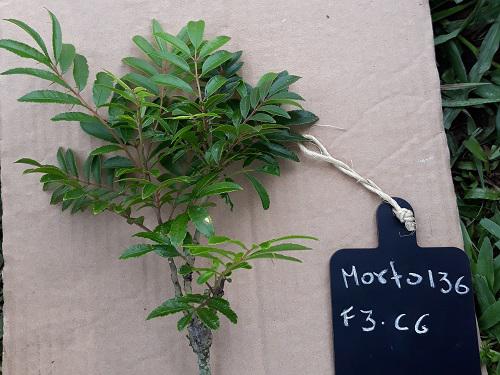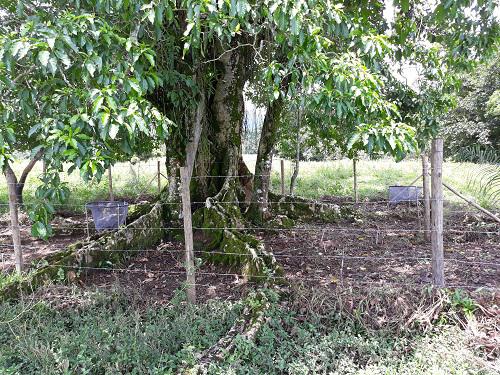Marcelle Barboza Pacheco Cardoso
Isolated trees have been regarded as “regeneration nuclei” in tropical pastures, potentially providing an effective and low-cost tool for large-scale forest restoration, which is urgent for the Brazilian Atlantic Forest. In this project, seed rain and seedling dynamics will be monitored at forest edges, open pasture matrix and in isolated trees for two years, to quantify the contribution of isolated trees for natural regeneration. The influence of local and landscape factors on forest regeneration will also be quantified. The results will allow development of targeted, low-cost and effective management strategies for landscape restoration and conservation of a top-ranked biodiversity hotspot.

Plant collected in sampling areas (isolated trees).
Habitat loss and climate change are the main threats to global biodiversity. Large-scale ecological restoration is imperative to mitigate the effects of these threats, complementing actions to the conservation of pristine areas. Global and local initiatives for ecological restoration, such as the Bonn Challenge and the Brazilian Atlantic Forest Restoration Pact, have been proposed to intensify large-scale forest restoration at medium-term.

Seed traps and seedling plots installed in experimental areas - isolated trees (December 2018 and January 2019).
Natural regeneration based on ecological succession has been considered promising for the achievement of these ambitious restoration goals, due to the high potential for biodiversity and ecosystem services gains at costs considerably lower than those of active restoration.
Isolated trees may serve as an alternative or complementary tool to accelerate and direct ecological succession in deforested lands, as they can act as “regeneration nuclei”. Yet, it is not clear how local and landscape factors affect the potential of isolated trees to speed-up ecological succession. This project aims to identify, quantify and compare the barriers to natural regeneration in early stages in open pastures, in pastures with isolated trees and at pasture-forest edge areas.
Seed rain, microclimate, soil properties and structural features of isolated trees will be measured and their influence on recruitment, survival and growth of woody seedlings will be evaluated for two years. Additionally, landscape features such as the total area of forest cover surrounding each sampling site, the distance to areas sources of propagules and the number of adjacent trees and shrubs will be measured as well. This will allow us to elucidate and compare the relative importance of local and landscape factors in the natural regeneration and to develop management strategies to enhance forest cover in degraded lands.
In addition, the spatial distribution of isolated trees and their contribution to functional connectivity will be quantified, allowing indication of the specific areas where isolated trees should be maintained or planted to catalyze natural regeneration at the landscape scale.
The results will be disseminated locally through environmental education and scientific meetings organized by REGUA, as well as through a scientific meeting organized by the Conservation Units from the Atlantic Forest Central Fluminense Mosaic and a scientific meeting of the Private Reserves of Natural Patrimony – RPPN. The recommendations from this project will be disseminated to rural landowners in the region through distribution of material, such as booklets, informing landscape management practices and the ecological and economic benefits from these practices, such as access to specific lines of credit.